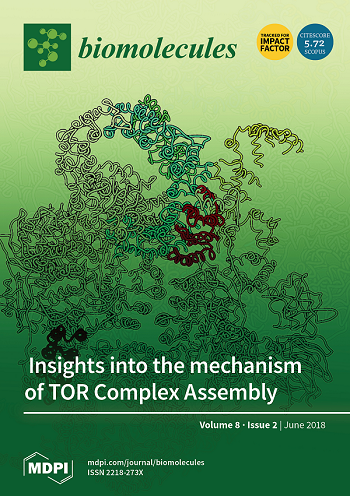Are Melanocortin Receptors Present in Extant Protochordates?
IF 4.8
2区 生物学
Q1 BIOCHEMISTRY & MOLECULAR BIOLOGY
引用次数: 0
Abstract
Functional melanocortin receptor (MCR) genes have been identified in the genomes of early chordates, e.g., the cyclostomata. Whether they appear in the most ancient chordates such as cephalochordate and urochordata, however, remains unclear due to missing genetic data. Herein, we studied five putative (from NCBI database), sequence-based predicted MCR-like receptors from urochordata and cephalochordate, including Styela clava, Ciona intestinalis, Branchiostoma floridae, and Branchiostoma belcheri. The BLAST and phylogenetic analyses suggested a relationship between these specific receptors and vertebrate MCRs. However, several essential residues for MCR functions in vertebrates were missing in these putative chordata MCRs. To test receptor functionality, several experimental studies were conducted. Binding assays and functional analyses showed no specific binding and no ligand-induced cAMP or ERK1/2 signaling (with either endogenous α-MSH or synthetic ligands for MC4R), despite successfully expressing four receptors in HEK 293T cells. These four receptors showed high basal cAMP signaling, likely mediated by ligand-independent Gs coupling. In summary, our results suggest that the five predicted MCR-like receptors are, indeed, class A G protein-coupled receptors (GPCRs), which in four cases show high constitutive activity in the Gs-cAMP signaling pathway but are not MCR-like receptors in terms of ligand recognition of known MCR ligands. These receptors might be ancient G protein-coupled receptors with so far unidentified ligands.黑色皮质素受体是否存在于现生的原脊索动物中?
在早期脊索动物(如环脊索动物)的基因组中发现了功能性黑皮质素受体(MCR)基因。然而,由于遗传数据的缺失,它们是否出现在最古老的脊索动物(如头脊索动物和尿脊索动物)中仍不清楚。在此,我们研究了五种推测的(来自 NCBI 数据库)、基于序列的预测 MCR 样受体,它们分别来自尿脊索动物和头脊索动物,包括 Styela clava、Ciona intestinalis、Branchiostoma floridae 和 Branchiostoma belcheri。BLAST 和系统进化分析表明,这些特异性受体与脊椎动物的 MCR 之间存在某种关系。然而,在这些推定的脊索动物 MCRs 中缺少脊椎动物 MCR 功能所必需的几个残基。为了测试受体的功能,我们进行了多项实验研究。尽管在 HEK 293T 细胞中成功表达了四种受体,但结合测定和功能分析结果显示,这些受体没有特异性结合,也没有配体诱导的 cAMP 或 ERK1/2 信号传导(使用内源性 α-MSH 或 MC4R 的合成配体)。这四种受体显示出较高的基础 cAMP 信号,可能是由配体无关的 Gs 耦合介导的。总之,我们的研究结果表明,五种预测的类 MCR 受体确实是 A 类 G 蛋白偶联受体(GPCR),其中四种受体在 Gs-cAMP 信号通路中表现出高组成活性,但在已知 MCR 配体的配体识别方面并非类 MCR 受体。这些受体可能是古老的 G 蛋白偶联受体,其配体至今尚未确定。
本文章由计算机程序翻译,如有差异,请以英文原文为准。
求助全文
约1分钟内获得全文
求助全文
来源期刊

Biomolecules
Biochemistry, Genetics and Molecular Biology-Molecular Biology
CiteScore
9.40
自引率
3.60%
发文量
1640
审稿时长
18.28 days
期刊介绍:
Biomolecules (ISSN 2218-273X) is an international, peer-reviewed open access journal focusing on biogenic substances and their biological functions, structures, interactions with other molecules, and their microenvironment as well as biological systems. Biomolecules publishes reviews, regular research papers and short communications. Our aim is to encourage scientists to publish their experimental and theoretical results in as much detail as possible. There is no restriction on the length of the papers. The full experimental details must be provided so that the results can be reproduced.
文献相关原料
| 公司名称 | 产品信息 | 采购帮参考价格 |
|---|
 求助内容:
求助内容: 应助结果提醒方式:
应助结果提醒方式:


